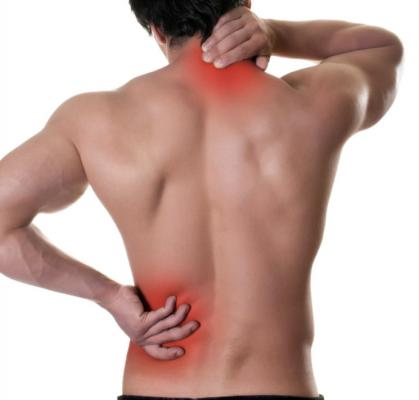
Index of Articles
Crunch and Inverse Crunch
There are no particular risks associated with crunch and reverse crunch.
We point out a habit: to hold a disc behind the neck with the arms to increase the difficulty of the crunch and / or push with the hands behind the neck to help in the concentric part. The hands DON'T they should be kept behind the neck as it naturally leads to pushing on this area to help in the effort as the collapse approaches, touching the sternum with the chin. In the long run, this leads to the development of painful cervical pathologies. Hands should be held on the chest. Maybe you can wrap a towel behind your neck, holding it at the ends. To intensify the work it is advisable to extend the arms above the head.
Nothing to report for the Cable Crunch / Lat Machine.
Sit Up and Sit Up on the Roman Bench
The Sit Up is a compound exercise used in particular for the strength / mass phases and in martial arts. This abdominal exercise is a compound exercise used especially for the strength / mass phases and in martial arts. The dynamic work of the abdomen is already exhausted in the very first part of the movement, in the part of the approach of the sternum to the pubic symphysis, while for the rest of the movement of lifting the bust the abdomen remains contracted to stabilize the trunk, it does not shorten further. The work of lifting the bust is carried out by the iliopsoas and the rectus femoris. Peculiarity of the iliopsoas is that of originating from the last lumbar vertebrae, therefore of carrying out a lordotic traction every time it contracts. A hypertonic iliopsoas leads to hyperlordosis and to the pathologies of the spine already mentioned above. It is therefore an exercise to be performed with caution, without exceeding, contraindicated to hyperlordotic people and in any case to those who have pathologies affecting the lumbar spine. Painful inflammations in the lower back are common in those who frequently perform these exercises, especially if with abrupt and accelerated changes of speed (as in martial arts).
Leg Raise
Also including the lifting of the legs to the parallels.
For the legs raise, another compound movement, what has been said for sit-ups is the same, except that in this case first the work of the thigh flexors on the hip is performed, and then the work of the abdomen. It should also be noted that several subjects perform these exercises so badly that the abdomen ends up being almost completely uninterested in the work done, if not for a stabilizing isometric contraction.
Twist
This exercise should always be done quickly and with little load.
In fact, the back is not strong for torsional work, and the inertia generated by an excessive load can overcome the resistance of the vertebro-ligament system. This is even more true if you perform the exercise standing, since in addition to the stress on the spine, the same torsional stress on the knees is added. In summary, the risks associated with the twist are due to an excess load. The obliques of the abdomen are easily hypertrophied and their hypertrophy widens the waist instead of thinning it with a consequent unsightly effect, so they do not always need to be stimulated with intensity.


























